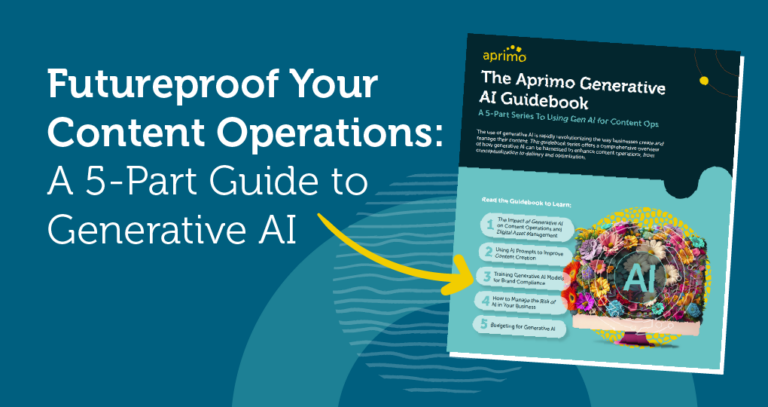Accelerating Client Communications With Digital Asset Management (DAM)

One of the most frustrating things that can happen when working with clients on marketing or creative assignments is finding out that you were working on two different versions of the same file. Digital asset management (DAM) is the key to solving this problem and many other issues that often come up when communicating with clients.

Overview of Client Communications Challenges
Good communication is essential for an efficient working relationship, and this is especially true when you’re handling dozens or even hundreds of digital brand assets.
Some of the most common challenges in client communications include:
-
Miscommunication due to working on different versions of the same file
-
Lack of efficient solutions to streamline communication processes
-
Difficulty in maintaining consistent branding across different communication channels
-
Time-consuming and manual processes for sharing and transferring large files
-
Inability to easily track and retrieve visual assets
-
Limited accessibility and centralization of digital assets
Streamlining the communication process should be a high-priority objective for any business that frequently creates and edits digital assets. The best solution is leveraging technological solutions like Digital Asset Management.
Introduction to Digital Asset Management
Digital asset management provides a centralized system that companies can use to organize, store, and distribute their digital assets, including:
-
Images
-
Videos
-
Documents
-
Audio files
-
Media files
-
Graphics
-
Presentations
-
Digital media like AI-generated images or videos
A digital asset management system serves as a single source of truth that enables users across teams and organizations to collaborate more efficiently.


The Impact of DAM on Client Communications
Digital asset management software is a proven tool for improving client communications and boosting productivity across organizations.
Here are some of the main benefits:
-
Accelerates client communications: Real-time access to digital assets reduces the time needed to transfer large files and eliminates the risk of working on outdated or incorrect file versions.
-
Increases transparency: File version ownership and edit history allow users to see how files have changed over time and manage future edits.
-
Upholds brand integrity: DAM software helps brands remain consistent in their visual communications so they can stay true to their mission and values.
-
Improves workflow efficiency: Automation features do away with repetitive tasks, enhance file organization, and provide intelligent search and retrieval capabilities.
-
Enhances security and permissions: Features like access controls, user authentication, and permissions management ensure that only authorized users can access and modify sensitive digital assets.
-
Higher efficiency: By reducing the time and effort it takes teams to work on visual assets, DAM software allows you to spend more time creating content that resonates with your customers.
-
Data and analytics: This is one of the most important aspects of DAM. Analytics allow you to track the performance of various metrics and use this knowledge to optimize your content delivery.
Key Features of DAM for Client Communications
Look for these key features when assessing DAM for client communications.
-
Metadata tagging for easy search and retrieval functions
-
Version control to enhance collaboration and consistency
-
File support for as many file types as possible
-
Digital rights management to promote security and roles-based file access
-
Brand guidelines for effective collaboration and communication
-
AI-powered features to streamline processes, including:
-
automated descriptions to aid in content discovery and provide similar content suggestions to maximize asset reuse
-
personalized content coaching to provide quick access to support topics, help users stay consistent with brand guidelines, and create content variations
-
automated translation, image alteration, and content personalization
-
intelligent data and analytics
-


Integration With Communication Platforms
It’s important to make sure your DAM system can integrate with your preferred communication platforms. Your productivity won’t improve much if you’re wasting time trying to transfer files and permissions between systems.
Here are a few things to keep in mind when it comes to facilitating a seamless flow of assets within communication workflows.
-
Email integration: DAM platforms often provide the ability to directly send files or download links through email instead of manually attaching large files or external download links.
-
Project management integration: Integration with project management tools allows users to link or embed their digital assets within existing project workflows.
-
CRM integration: Sales and marketing teams can easily access visual assets without needing to contact the design team or search through messy folders.
Best Practices for Optimizing Client Communications With DAM
While DAM will likely improve your digital asset organization overall, there are still many best practices you should follow to maximize the benefits of DAM.
Here are some practical tips for getting the most out of your DAM platform:
-
Be consistent with naming conventions for file names and metadata.
-
Establish a well-structured folder hierarchy that suits your organizational needs.
-
Create DAM workflows that set the standard for how users should interact with digital assets at different stages in the asset’s life cycle.
-
Use version control to keep everyone on the same page.
-
Define access permissions, including admin, developers, designers, editors, and end users.
-
Enable collaboration features to streamline the review and approval process.
-
Set up integrations with as many other tools and platforms as possible for seamless asset distribution.
-
Conduct regular audits to remove outdated or unused assets to maintain a streamlined system.
-
Leverage data and analytics to gain insights into how digital assets are used and where.
-
Provide training and educational resources for users that include these best practices.

Frequently Asked Questions
How does DAM enhance collaboration in client communications?
Without a centralized source of information, it’s easy for files to get lost or for people to work with the wrong versions. DAM enables access to the correct files at all times and reduces the time and effort involved in transferring large files by email.
Can DAM accommodate various file types and sizes?
DAM systems can easily handle diverse digital assets, including images, videos, documents, audio files, media files, graphics, presentations, and other digital media. A key advantage of DAM is its ability to organize various file types and sizes in a searchable database.
Is DAM suitable for small businesses or only for large enterprises?
While DAM is especially useful for large enterprises due to its ability to catalog extensive media databases and integrate with other platforms for project management and collaboration, it also offers benefits to startups and small businesses.
How does DAM contribute to brand consistency in client communications?
DAM provides a centralized database for visual assets that can be accessed by brands and clients alike. This helps maintain consistency by offering version control, which documents changes made by different individuals.




